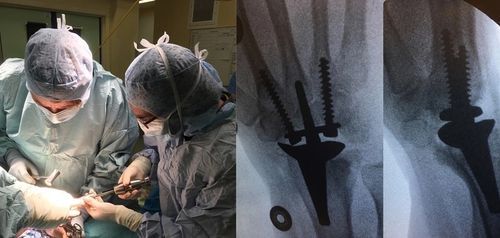All about Kienbock’s disease! Know the Symptoms, Causes and Treatments

Athletes literally grind themselves on the field to achieve a win, but sometimes, when time gets tougher, they have to compromise on their muscles and joints to achieve a win. Soreness, sprains are the common aches which athletes bear. But sometimes the consistent extra push on the body takes a shape of disease like: Kienbock’s.

Let’s understand what’s Kienbock’s disease is?
Kienbock’s disease is a condition in which blood supply to one of the eight small carpal bones in the wrist called lunate gets limited. Lunate is found in the middle of the wrist connecting to the radius arm bone. If blood is not supplied adequately to the body tissue, oxygen and nutrients cannot reach the tissue, and it will die. It is also known as vascular necrosis of the lunate or osteocronosis of the lunate.

Four stages of the Kienbock’s disease:
Stage 2: When bone loses its blood supply, it starts getting harder.
Stage 3: The bone begins to get fragmented and collapsed.
Stage 4: Not all patients reach this stage. The lunate gets completely collapsed, and bones also become damaged and arthritic.
Signs and Symptoms of Kienbock’s disease:
- Weakening of grip strength
- Tenderness directly over the lunate bone
- Feel difficulty or pain while turning the hand upward
- Clicking or clunking in the wrist

Why Kienbock’s Disease gets developed among athletes?
Mostly Sports injury cases like ankle injury, lower limb pain etc. come into notice. But, wrist injuries are being found among athletes who are associated with badminton, tennis, volleyball, cricket where there is high involvement of wrist usage. Recently, a case of 23 year old boy came to notice. The chief complaint of this guy was dorsal wrist discomfort, stiffness and pain. He was in a good health and there was no history of a specific traumatic complaint. But research says that there can be genetic reasons too.

- Blood doesn’t drain away properly through the veins.
- Trauma may affect the flow of blood supply, for example, a single blow to the wrist.
- You may notice skeletal variations, for example, an abnormally shaped lunate bone.
- Problems with arterial blood supply. Most people have two blood vessels supplying blood to the lunate bone, but some have just one.
- Another cause is when the long bone in the forearm is shorter than the normal. If the ulna and radial bones are of different lengths, then this may put extra pressure on the lunate in certain wrist motions adding extra stress on the wrist.
The progression of Kienböck’s disease varies between patients, but it tends to develop slowly and subtly over a number of years. Whenever the mechanics of the wrist become affected, it leads to abnormal stress and causes wear & tear inside the wrist.

How to diagnose Kienbock’s disease?

Before the symptoms get worse, it is important to get the timely treatment. Treatment usually depends on how early the disease is diagnosed. Initially, you can try getting rid of the diseases through non surgical methods like:
- Give rest to the wrist: During the early stages, it might be possible to splint as well as cast the wrist for several months. While you rest, your wrist improves the chance of restoring blood flow to the lunate bone.
- Consume anti-inflammatory drugs: Have painkillers like Ibuprofen, Aspirin to help manage swelling and pain during the early stages.
- Indulge into cortisone injections: You can try injecting cortisone; this may also improve your pain.
- Do taping on the wrist: If you are running through a training schedule or just one day prior to your match, you diagnosed the disease and you don’t want to skip. Then, we would suggest you to do taping on the wrist.

- Get a consultation with physical therapist: Fix an appointment with the physical therapist, he can teach the patient how to use the wrist in a way that is less painful as well as slow down the progression of the disease. If the pain gets worse and you have a lot of time before arrival of the new match, then try any of the surgical procedures:
- Revascularization: Revascularization surgery restores or increases the blood supply to the lunate bone. The surgeon removes a portion of bone along with all its attached blood vessels from another bone and inserts it into the lunate bone. This is possible during stages 1 and 2, before the bone deteriorates too far.
- Joint leveling: Joint leveling is another great option when the two bones of the forearm, the radius and the ulna, have different lengths. Joint leveling helps stop the disease from progressing by reducing the forces that compress the lunate bone.
- Proximal row carpectomy: This is the best option if the bone is broken into pieces or severely collapsed. During this procedure, the removal of the lunate bone and the two bones on either side of it is involved.
- Fusion: Partial fusion involves fusing some of the wrist bones together, effectively making one solid bone. This can reduce symptoms of pain as well as maintain some wrist motion.
- Implant arthroplasty: In this surgery, the lunate bone is replaced with a prosthetic replica made of a durable, special, pyrolytic carbon material, while preserving the normal anatomy of the other bones.




